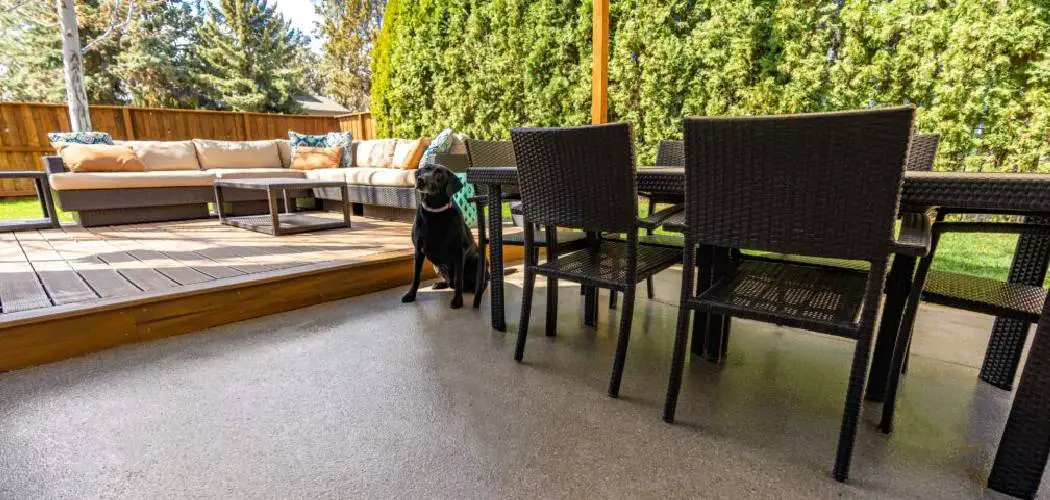Patio furniture is a wonderful addition to any outdoor space, offering comfort and style for relaxation and entertainment. However, exposure to rain and moisture can cause damage over time, leading to rust, mold, or warping depending on the material. To keep your patio furniture in excellent condition and extend its lifespan, it’s important to take proactive steps to protect it from the elements. This guide will provide practical tips and solutions for how to protect patio furniture from rain.
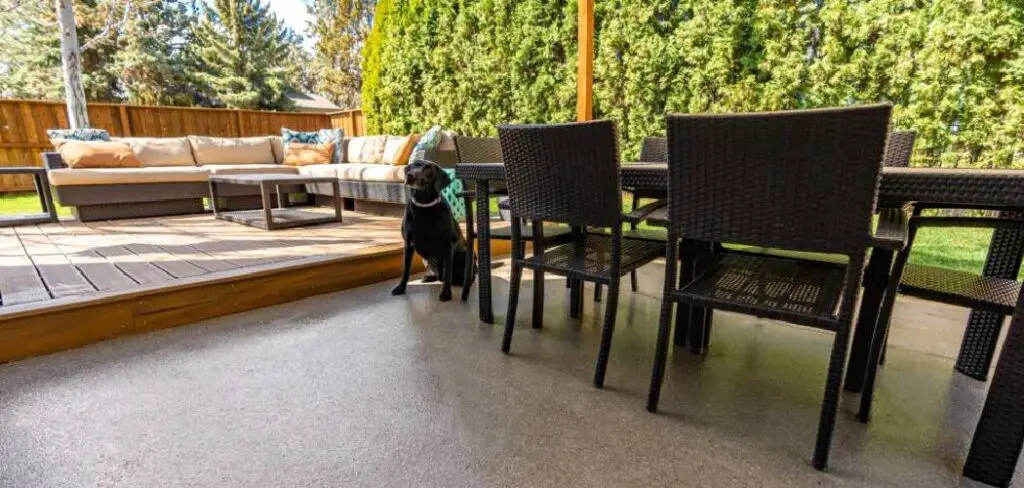
Why Protecting Patio Furniture from Rain is Essential
Protecting patio furniture from rain is crucial to ensuring its longevity and maintaining its aesthetic appeal. Prolonged exposure to moisture can lead to various issues such as rusting in metal furniture, warping or cracking in wooden pieces, and the growth of mold or mildew on fabric cushions. These damages not only compromise the functionality of the furniture but can also result in costly repairs or replacements. Furthermore, taking steps to shield patio furniture from rain helps preserve its color, texture, and overall quality, making your outdoor space inviting and comfortable for years to come. By preventing water damage, you can enjoy the full value of your investment and create a durable, beautiful environment for relaxation and social gatherings.
10 Methods How to Protect Patio Furniture from Rain
1. Use Waterproof Patio Furniture Covers for Daily Protection
One of the most effective ways to safeguard patio furniture from rain is by using high-quality, waterproof covers. These covers are typically made of heavy-duty polyester or PVC-coated fabric, designed to repel water while still allowing airflow to prevent mold. Choose covers that are specifically fitted for your furniture pieces—whether it’s a table, sectional, or chaise lounge—ensuring a snug fit that resists being blown off in a storm. Many come with drawstrings or Velcro straps for added security. By covering your furniture whenever it’s not in use, you provide a reliable barrier against rainfall, dew, and even unexpected summer downpours.
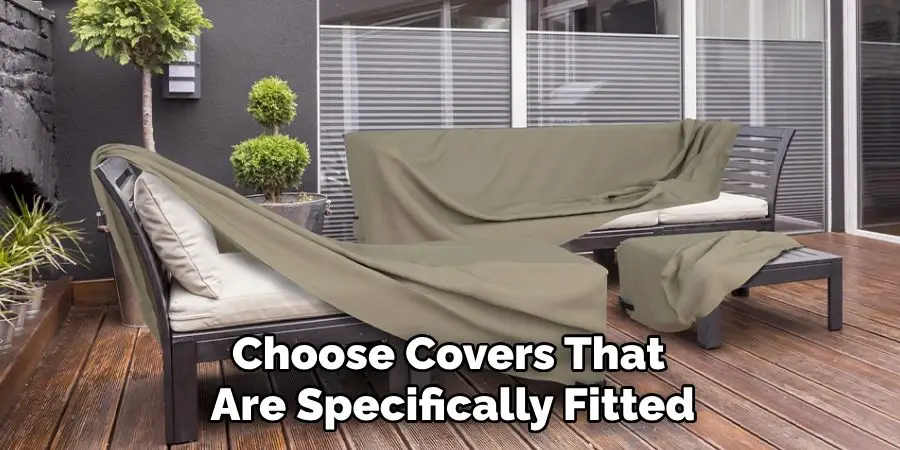
2. Store Cushions Indoors or in Waterproof Storage Boxes
While frames of outdoor furniture may be built to withstand moisture, cushions are often more vulnerable. Even if labeled “outdoor,” prolonged exposure to rain can lead to mildew, fading, and unpleasant odors. The best method is to store them indoors when not in use. If indoor storage isn’t practical, invest in a waterproof cushion storage box or deck box. These containers are specifically designed to keep moisture out and airflow in. Some even double as seating. Regularly storing cushions keeps them dry, fresh, and ready for use, extending their lifespan significantly.
3. Choose Water-Resistant Materials for Long-Term Durability
If you’re selecting new patio furniture or replacing existing pieces, opt for materials that naturally resist water damage. Metals like aluminum or powder-coated steel resist rust, while synthetic wicker and high-grade resin are non-porous and less prone to decay. Teak and other hardwoods, while more expensive, contain natural oils that repel water and resist rot. Materials matter when it comes to rainy climates. Choosing the right ones upfront minimizes your maintenance burden and allows you to enjoy your patio in all seasons with fewer concerns about water-related deterioration.
4. Elevate Furniture Off the Ground to Prevent Water Damage
Keeping furniture legs directly on the patio surface can lead to water pooling and absorption, especially during and after heavy rain. To avoid this, consider adding rubber or plastic risers or protective glides under the feet of your furniture. These slightly elevate the frame off the wet surface, allowing better drainage and airflow underneath. This prevents water from wicking into wooden or metal frames and also makes it easier to clean beneath the furniture. A simple elevation can dramatically reduce rot, rust, or warping, especially over time.
5. Create Overhead Shelter with Umbrellas, Pergolas, or Awnings
Providing structural shelter over your patio area offers the dual benefit of protection from sun and rain. Large market umbrellas, retractable awnings, or permanent pergolas with waterproof canopies can shield furniture from getting soaked during showers. Even partial coverage helps reduce direct rain exposure and allows you to enjoy the space during light drizzle. Pergolas can be outfitted with clear polycarbonate panels or weather-resistant curtains for more coverage. Investing in overhead protection adds style and comfort while also extending the lifespan of your patio furniture by reducing frequent wetting.
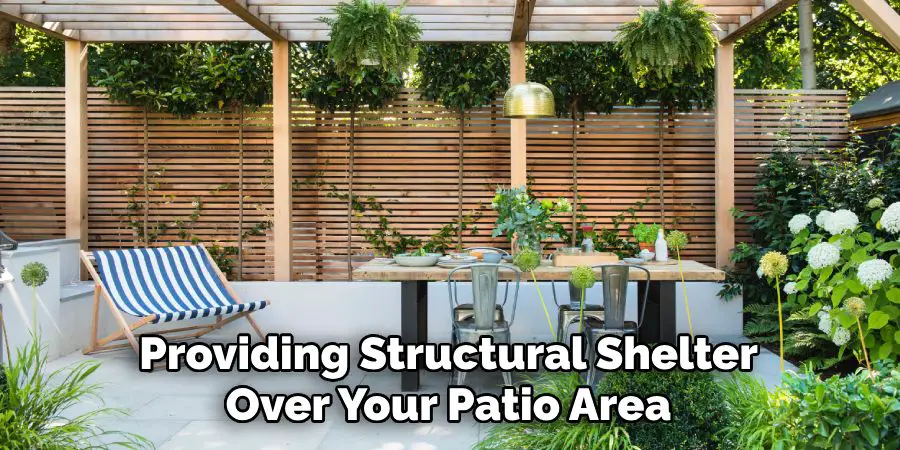
6. Apply Water-Repellent Spray to Cushions and Fabrics
To bolster your cushions’ and umbrellas’ resistance to rain, use a fabric-protecting spray like Scotchgard™ or other outdoor textile water repellents. These sprays create an invisible barrier that helps water bead up and roll off rather than soak in. Reapply every few months or as needed, especially after cleaning or exposure to heavy rain. Make sure to apply it in a well-ventilated area and allow it to dry thoroughly before use. Fabric sprays are a low-cost, high-impact solution for boosting weather resistance without altering the feel or look of your outdoor textiles.
7. Use Sloped Furniture Covers or Furniture Designed with Drainage
One of the often-overlooked tricks to keeping rain from pooling is using sloped or angled furniture covers—or investing in furniture with built-in drainage. Flat surfaces can collect water, leading to mildew and eventual damage. Some newer patio furniture is designed with mesh seats, drainage holes, or sloped cushions to encourage water runoff. Likewise, quality covers are designed with a slope so water rolls off rather than puddling on top. If water collects on your furniture or cover, remove it promptly with a broom or towel to avoid sagging or seepage.
8. Move Lightweight Furniture to Sheltered Areas During Storms
For lightweight or portable furniture, the simplest protection method is relocation. When storms are forecasted, move chairs, tables, or cushions under a covered porch, into a shed, garage, or any other dry area. Folding chairs or stackable pieces are especially easy to stow. Even temporarily leaning them against a wall can reduce direct rain exposure. This approach minimizes water contact and wind damage, especially for lighter furniture that may tip over or blow away during high winds.
9. Dry Furniture Promptly After Rain to Prevent Mildew and Stains
After a rainstorm, it’s crucial to dry your furniture—especially if it wasn’t covered or protected. Use an absorbent towel or microfiber cloth to wipe down metal, wood, or plastic surfaces. For cushions or padded materials, stand them upright or un-zip covers if removable to allow air circulation and quick drying. Trapped moisture can lead to mildew, mold, and foul smells, particularly in humid climates. Taking a few minutes to dry your furniture after rain ensures it remains clean, comfortable, and inviting for your next use.
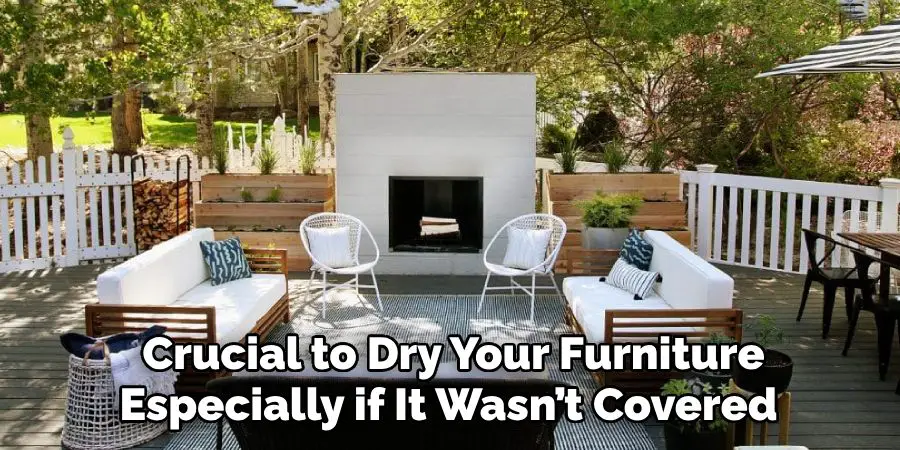
10. Schedule Regular Cleaning and Maintenance to Resist Rain Damage
Protecting your furniture from rain isn’t only about barriers—it also involves consistent upkeep. Clean your furniture regularly with mild soap and water to remove dirt, pollen, and contaminants that can promote mildew when wet. Check for rust spots on metal frames or cracks in waterproof finishes, and repair them promptly. Reapply sealants to wooden pieces each season to preserve their water resistance. Seasonal maintenance keeps the materials strong and weather-ready, allowing them to better withstand rain and recover quickly after exposure.
Maintenance and Upkeep
Proper maintenance and upkeep of outdoor furniture are essential to prolong its lifespan and retain its aesthetic appeal. Start by covering your furniture with weather-resistant covers when not in use, especially during prolonged periods of rain or snow. Store cushions and textiles in a dry, ventilated area to prevent mold and mildew growth. For furniture made of metal or wrought iron, inspect regularly for signs of corrosion and apply a rust-resistant coating if necessary. Avoid using harsh chemicals that may damage finishes; instead, opt for gentle cleaners suited to the material type. By dedicating time to routine care, you can ensure your outdoor furniture remains both functional and visually pleasing year after year.
Safer and More Reliable Alternatives
When it comes to outdoor furniture care, selecting safer and more reliable alternatives to traditional cleaning and maintenance methods can be beneficial. For example, instead of using chemical-based cleaners, opt for eco-friendly solutions like a mixture of mild soap and water or vinegar and baking soda for effective and non-toxic cleaning. To protect furniture from harsh weather conditions, consider using breathable, water-resistant covers that allow airflow while keeping moisture away. Additionally, when selecting materials, look for sustainably sourced wood, rust-resistant aluminum, or all-weather wicker to ensure durability and reduce environmental impact. By choosing these alternatives, you can maintain your furniture while promoting safety and sustainability.
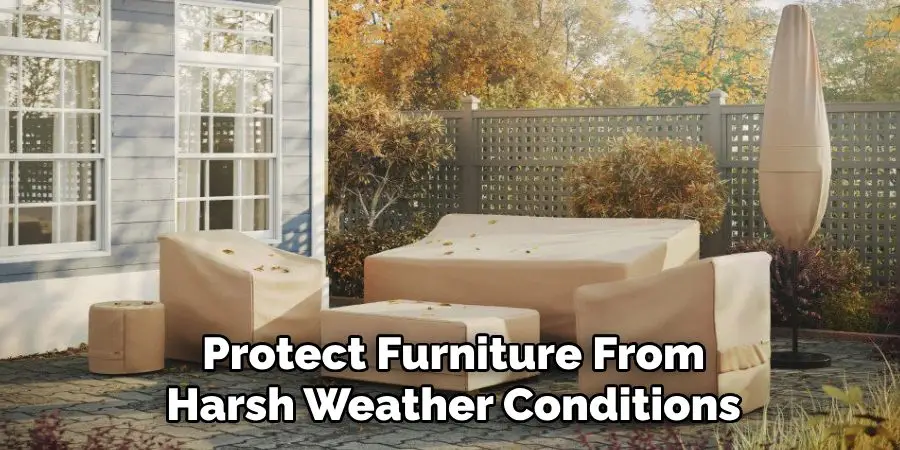
Conclusion
Rain is inevitable, but damage to your patio furniture doesn’t have to be. By combining smart choices—such as using waterproof covers, choosing water-resistant materials, applying protectants, and storing items thoughtfully—you can dramatically extend the life and beauty of your outdoor furniture. These ten methods offer practical, effective protection against moisture, mold, and the slow wear of weather exposure. Thanks for reading, and we hope this has given you some inspiration on how to protect patio furniture from rain!

